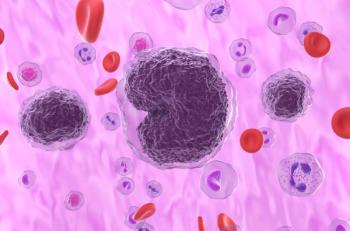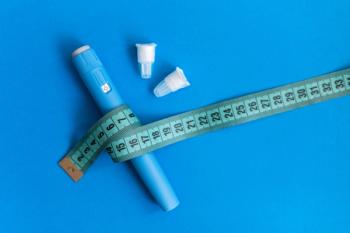
ART May Lower Risk of COVID-19 in Persons With HIV
Being on an antiretroviral treatment (ART) regimen of tenofovir disoproxil fumarate/emtricitabine may lower the risk of HIV-positive individuals contracting coronavirus disease 2019 (COVID-19).
Among the European countries, Spain has the highest prevalence of HIV, at 150,000 children and adults,
The authors of this cohort study of 77,590 persons—65% of all patients on ART in Spain—with HIV receiving care at any of 60 Spanish hospitals between February 1 and April 15, 2020, extracted data on those with cases of COVID-19 confirmed by polymerase chain reaction (PCR), most of whom had suppressed their HIV viral loads. Data on each HIV case (ie, age, sex, ART regimen), meanwhile, were extracted from the 2019 National HIV Hospital Survey. For comparison, the national COVID-19 Health Information System was used for data on the general population.
Seventy-five—day risk for the following were investigated:
- PCR-confirmed COVID-19 diagnosis, hospitalization, admission to the intensive care unit (ICU) and death, all per 10,000 persons
- COVID-19 diagnosis and hospital admission based on ART regimen: TDF/FTC Tenofovir alafenamide (TAF)/FTC Abacavir (ABC)/lamivudine (3TC) “Other” regimens
Of the total patient cohort, just 0.3% (236) had PCR-diagnosed COVID-19. And among this group, 64% (151) required hospitalization, 6.4% (15) needed ICU care, and 8.5% (20) died. However, the median (interquartile range [IQR]) was just 7 (IQR, 4-10) days.
Stratifying for age and sex showed that being male and older than 70 increased both the chances of a COVID-19 diagnosis and hospitalization for it. In fact,
Most patients were on an ART regimen comprising a TAF/FTC backbone (33%), an ABC/3TC backbone (26%), or TDF/FTC (16%). The other regiments consisted of integrase inhibitors (50%), nonnucleoside reverse transcriptase inhibitors (21%), and protease inhibitors (19%), all as the third drug.
Additional results showed that persons with HIV taking ART with TDF/FTC had the lowest risk for a COVID-19—related hospitalization, at 10.5 (95% CI, 5.6-17.9), followed by 20.0 (95% CI, 14.2-27.3) for those receiving “other” regimens, 20.3 (95% CI, 15.2-26.7) for TAF/FTC, and 23.4 (95% CI, 17.2-31.1) for ABC/3TC.
However, the risks for an actual COVID-19 diagnosis differed except for TDF/FTC, which again had the lowest associated risk at 16.9 (95% CI, 10.5-25.9), followed by ABC/3TC at 28.3 (95% CI, 21.5-36.7), other regimens at 29.7 (95% CI, 22.6-38.4), and TAF/FTC at 39.1 (95% CI, 31.8-47.6)
Compared with the general population, this risk for COVID-19 diagnosis was lower among persons with HIV: 30.0 vs 41.7 per 10,000 persons. This even after accounting for health care workers among the general population, which still showed a greater risk for COVID-19 of 33.0.
Most importantly, TDF/FTC did not lead to any ICU admissions or death.
The authors proposed that the low risk of death and hospitalization for HIV-positive patients on NRTI regimens comes from “molecular docking and extension reactions with RNA-dependent RNA polymerase (RNAdRNAp).” Essentially, NRTIs may be effective at fighting COVID-19 because they inhibit RNAdRNAp. In particular, the small size of tenofovir diphosphate, which is the common active triphosphate form of TAF or TDF, has been cited because it “fits better in the active site of SARS-CoV-2 RNAdRNAp.”
“We took advantage of the overlap between 2 ongoing pandemics (HIV and SARS-CoV-2) in Spain,” the investigators concluded. “Our results suggest that the risk for COVID-19 diagnosis is not higher in HIV-positive persons than in the general population, and that HIV-positive patients receiving TDF/FTC had a lower risk for COVID-19 and related hospitalization than other HIV-positive persons.”
They suggested including current ART regimens as an area of focus both in studies of preexposure prophylaxis, as well as persons without HIV.
Reference
del Amo J, Polo R, Moreno S, et al. Incidence and severity of COVID-19 in HIV-positive persons receiving antiretroviral therapy. Ann Intern Med. Published online June 26, 2020. doi:10.7326/M20-3689
Newsletter
Stay ahead of policy, cost, and value—subscribe to AJMC for expert insights at the intersection of clinical care and health economics.













































